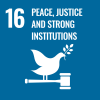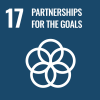
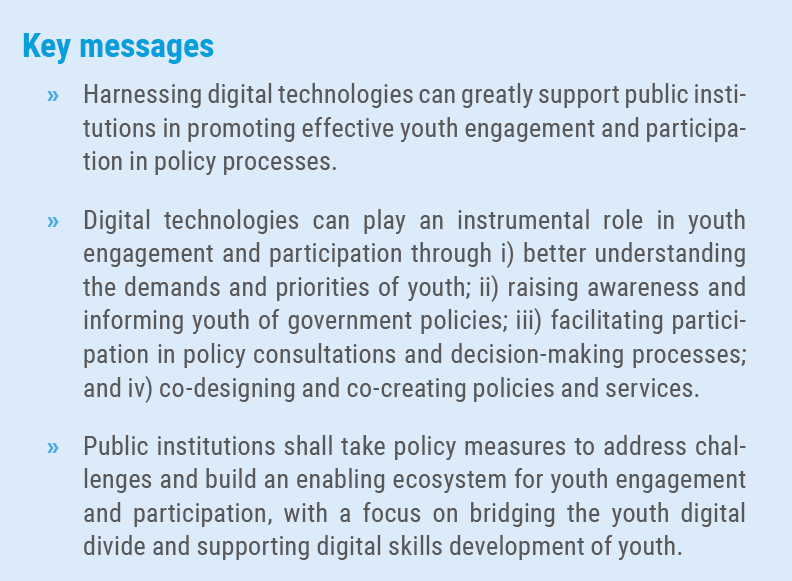 Introduction
Introduction
Public institutions are confronted with far-reaching and complex challenges in building an inclusive and resilient post-COVID-19 society, ranging from public health and employment to education and social protection. These are coupled with other pressing challenges toward achieving the 2030 Agenda for Sustainable Development, including poverty eradication, climate change as well as energy and food crises. As governments alone cannot effectively respond to these multi-faceted challenges and “participation is a key dimension of governance and one of the pillars of sustainable development”, collaborating with other stakeholders including the private sector, experts, civil society organizations, volunteers and local communities is ever more critical. By forging partnerships and collaboration, public institutions can harness the ideas, skills and resources of diverse stakeholders to better deliver their policies in transformative ways and address their gaps in financial, human and technical resources. This calls for a shift in public governance toward inclusive and participatory governance where citizens, including youth, actively engage and participate in policy processes and act as co-creators of government policies and services. The active engagement of youth in sustainable development efforts is central to achieving sustainable, inclusive and stable societies by 2030. The World Programme of Action for Youth and the UN Youth Strategy enshrine engagement and participation as key pillar of the UN decision-making and actions related to youth development. The ECOSOC Youth Forum accentuates the role of youth in the monitoring, review and implementation of the 2030 Agenda for Sustainable Development and the achievement of the Sustainable Development Goals (SDGs) as its main focus and provides a global platform for youth to voice their opinions, share ideas and think together about the ways to achieve the 2030 Agenda. The Report of the United Nations Secretary-General “Our Common Agenda” also highlights youth participation in one of its 12 commitments, stating, “Delivering on the priorities of young people and meaningfully including them in decision-making are investments that will deliver immediate returns, as well as build human capital and social cohesion for the longer term.” Youth participation is critical to promoting intergenerational equity, which is one of the 11 Principles of Effective Governance for Sustainable Development. Indeed, many government policies today will have a far-reaching impact for young generations in the coming years. With their innovative ideas and skills, youth are important drivers of innovation, game changers, and participants in policy processes at all levels. Young people can create innovative solutions, volunteer to support people in vulnerable situations and build the resilience of local communities, as witnessed during the COVID-19 pandemic response process. Youth-led solutions in various areas, including health and wellbeing, climate action and biodiversity, and food security, which were showcased during the #YouthLead Innovation Festival and Solutions Campaign organized by the United Nations Office of the Secretary-General’s Envoy on Youth in 2021, have shown that young people are “at the frontlines of developing new solutions and pillars of their communities”. Youth participation is also vital for promoting inclusiveness of policy processes, increasing legitimacy and ownership of policy decisions, holding governments accountable to their decisions, and enhancing trust in government. This Policy Brief examines how public institutions can more effectively engage youth and promote their participation in decision-making and public service delivery to build more inclusive and resilient societies. It first examines the challenges public institutions face in meaningfully engaging youth in decision-making and public service delivery, as well as the behaviors and characteristics of young people that can be relevant to policy dialogue and participation. It then explains how digital technologies can be harnessed to effectively engage young people in decision-making and delivering public services. Lastly, it provides a set of policy recommendations on how public institutions can overcome engagement challenges and build an enabling ecosystem for youth participation.
Addressing the Challenges of Youth Participation: Digital Technologies as an Enabler
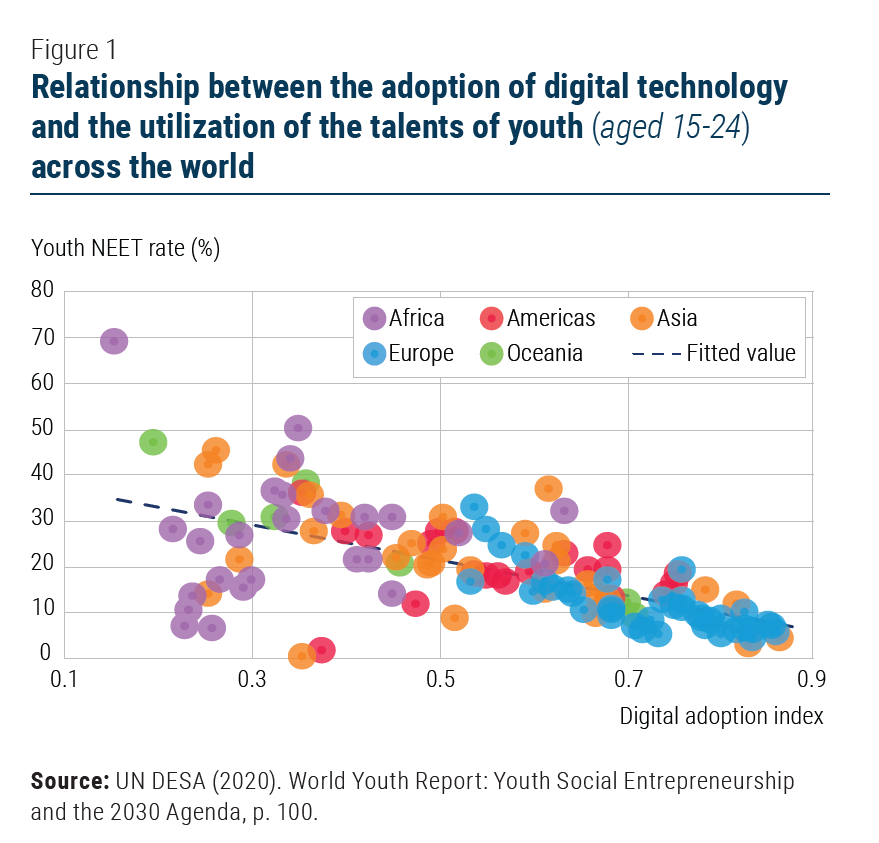 To promote youth participation in public governance, public institutions need to transform the way they interact and engage with young people and empower them to fully unleash their potential. There are several challenges and barriers to public participation of youth, including the lack of interest, low awareness on the available opportunities and channels of participation, lack of information and skills, absence of incentives, and lack of trust in government, among others. Institutionalized mechanisms and platforms for interacting and meaningfully engaging with youth are also often absent or inadequate. Meanwhile, young people may not realize their own potential as important drivers of change and transformation. It is therefore crucial for public institutions to design innovative strategies and approaches to address these challenges and better engage with youth. To design effective youth engagement strategies, governments should have a clear understanding of how young people communicate, behave and engage with others in order to tailor their engagement methods to young people’s needs. Many young people are considered “digital natives” by virtue of their age and early experience with technology. Digital technologies have become the major communication channels of youth these days, especially with young people rapidly embracing new digital tools during the COVID-19 pandemic. The UN E-Government Survey 2020 highlighted that young people are the driving force behind digitalization and innovation, contributing toward greater openness to and engagement in a data-driven and information-oriented future. Furthermore, the 2020 World Youth Report also suggested that the adoption of digital technologies has a positive correlation with the level of utilization of the talents and potentials of youth (See Figure 1). Youth in general have higher access to digital technologies and digital skills compared to other age groups. Youth are using the Internet more than the rest of the population, although the digital divide still poses a challenge to the young people in many developing countries, especially in the Least Developed Countries (LDCs) (See Figure 2). It is important to note that a substantial number of young people in developing countries still lack digital access and digital literacy. The 2020 World Youth Report also highlights, “The increased focus on new technologies driven by the advent of the Fourth Industrial Revolution should not obscure the fundamental goal of providing universal Internet access - an essential step towards narrowing the digital divide.”
To promote youth participation in public governance, public institutions need to transform the way they interact and engage with young people and empower them to fully unleash their potential. There are several challenges and barriers to public participation of youth, including the lack of interest, low awareness on the available opportunities and channels of participation, lack of information and skills, absence of incentives, and lack of trust in government, among others. Institutionalized mechanisms and platforms for interacting and meaningfully engaging with youth are also often absent or inadequate. Meanwhile, young people may not realize their own potential as important drivers of change and transformation. It is therefore crucial for public institutions to design innovative strategies and approaches to address these challenges and better engage with youth. To design effective youth engagement strategies, governments should have a clear understanding of how young people communicate, behave and engage with others in order to tailor their engagement methods to young people’s needs. Many young people are considered “digital natives” by virtue of their age and early experience with technology. Digital technologies have become the major communication channels of youth these days, especially with young people rapidly embracing new digital tools during the COVID-19 pandemic. The UN E-Government Survey 2020 highlighted that young people are the driving force behind digitalization and innovation, contributing toward greater openness to and engagement in a data-driven and information-oriented future. Furthermore, the 2020 World Youth Report also suggested that the adoption of digital technologies has a positive correlation with the level of utilization of the talents and potentials of youth (See Figure 1). Youth in general have higher access to digital technologies and digital skills compared to other age groups. Youth are using the Internet more than the rest of the population, although the digital divide still poses a challenge to the young people in many developing countries, especially in the Least Developed Countries (LDCs) (See Figure 2). It is important to note that a substantial number of young people in developing countries still lack digital access and digital literacy. The 2020 World Youth Report also highlights, “The increased focus on new technologies driven by the advent of the Fourth Industrial Revolution should not obscure the fundamental goal of providing universal Internet access - an essential step towards narrowing the digital divide.” 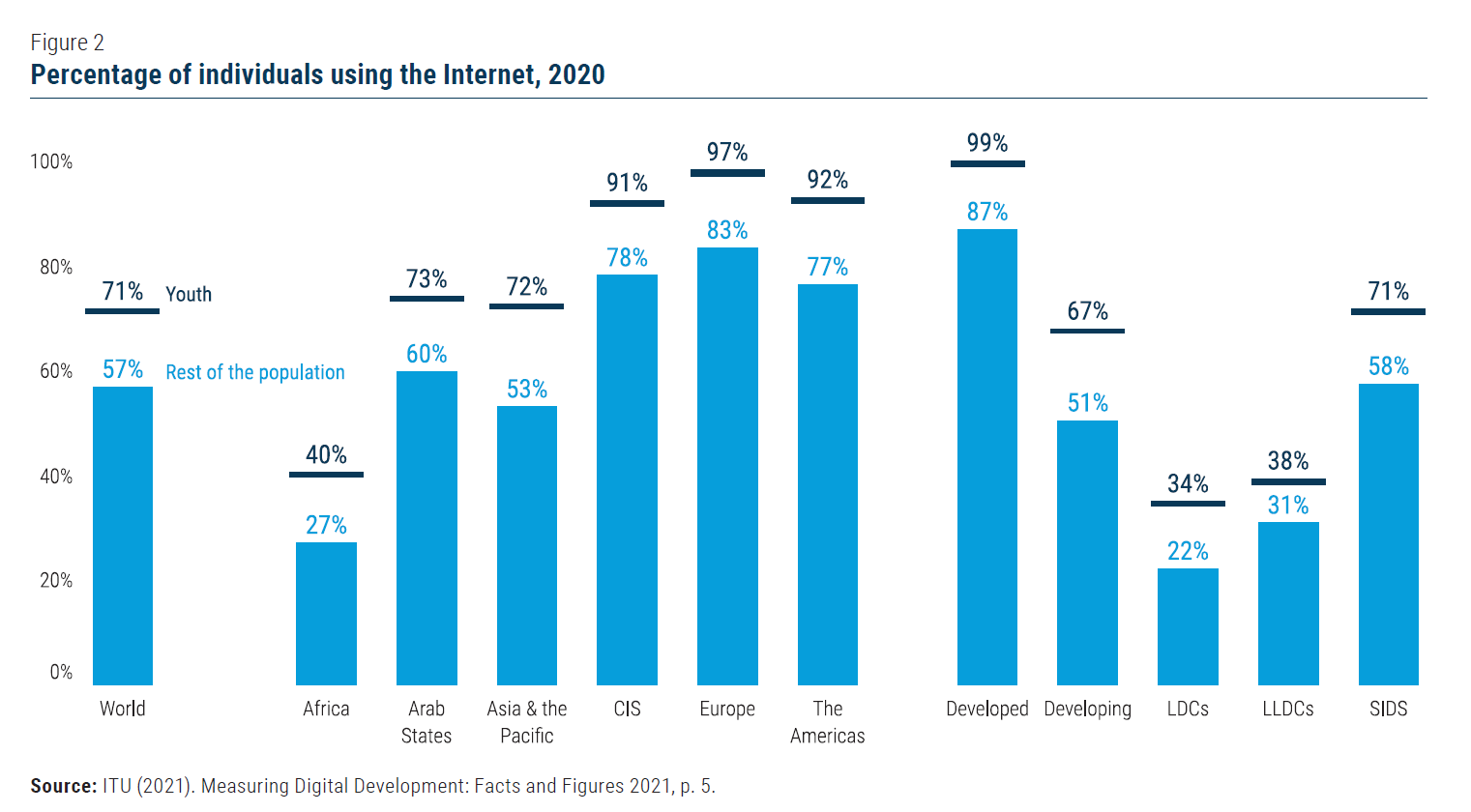
Understanding the Behaviors and Characteristics of Youth for Effective Policy Communication and Engagement
To promote effective youth engagement in public governance, it is essential to understand the behaviors and characteristics of young people in communication and participation and tailor the policy dialogue and engagement strategies and channels accordingly. The stylized studies on the communication and engagement behaviors and characteristics of young people can shed important light in designing and implementing government policy communication and engagement strategies targeted for youth. While these behaviors and characteristics are prominent features of young people in general, they appear common across different social segments as well, not exclusive only to youth. It is also worthy of note that these behaviors and characteristics may not be applicable to the whole youth group and could vary depending on different backgrounds and contexts. The following list highlights some of the youth’s behaviors and characteristics. Requesting prompt and immediate responses: Young people are used to instantaneous communications and prefer to receive quick feedback. In this regard, providing prompt or real-time responses is critical when interacting with youth. Preferring easily accessible, friendly and innovative contents: Young people prefer contents that are easily accessible and presented in a friendly, fun and creative way. Therefore, using visual-oriented, intuitive and interactive materials with clear and straightforward messages would be an important strategy for communication with youth. Being inclined to informal and non-institutionalized forms of participation: The modalities of youth participation are increasingly becoming informal or unconventional, and young people are more inclined to non-institutionalized channels of political participation. For example, young people prefer to use social media as an important place to voice their concerns about social issues. Expecting short-term and concrete consequences of participation: Younger generations are more appealed to short-term and case-oriented types of participation, and they are keen to the short-term consequences of their decision. Also, concrete consequences of participation are important for young people, as the lack of immediate and specific results after participation may make them think that their participation is not duly recognized and does not lead to actual impact. Being motivated by rewards: Young people are highly sensitive to rewards. In this regard, providing rewards can strengthen the motivation of young people to participate in the policy processes. Highly influenced by peers in social networks: Young people are more influenced by social groups and peer relationships than older age groups and greatly affected by the social norms and emotions emanating from social interactions. In this regard, socializing with peers and gaining peer recognition can be considered an important motivation and reward for young people’s participation. Feeling strong attachment to individual identity and self-expression: Identity and self-presentation are of primary concern to young people, and young people often experiment with their identities and self-presentation with others online. Considering this behavior, engagement and participation strategies that can recognize individual identity and enhance the sense of individual ownership to one’s ideas and participation may be particularly attractive to young people. Being conscious of trust: Trust in public institutions is an important concern to young people in regard to their participation in public governance, while the recent trends show that youth’s trust in government has decreased since 2006 in the majority of OECD countries. Thus, the strategies for youth engagement and participation need to be geared toward restoring and strengthening young people’s trust in public institutions.
Harnessing Digital Technologies for Promoting Youth Participation
Effective youth engagement in decision-making and public service delivery requires that governments have a keen understanding of young people’s demands and priorities. It necessitates effective communication channels to raise awareness and inform youth of government policies that affect their lives. It also requires putting in place mechanisms to facilitate youth’s participation in policy consultations and decision-making as well as processes for co-designing and co-creating policies and services. Experience has shown that digital technologies can be leveraged through e-participation in the four areas as shown below.
Understanding the demands and priorities of youth
An acute and timely understanding of the unique needs and priorities of youth is a critical prerequisite for effectively addressing the challenges of youth and fostering their participation in the policy processes by providing opportunities and contents which are relevant and of interest to them. This is particularly important as young people’s challenges, needs and priorities are often not static but continuously changing and evolving, and young people constitute a heterogeneous group with multiple elements of identity and experiences. Certain groups, such as youth with disabilities, young women, young refugees and indigenous youth, face a multitude of vulnerabilities with distinct needs and priorities. Leveraging digital technologies can make it possible for public institutions to identify and analyze the unique demands and priorities of youth in an effective and timely way. Particularly, interactive platforms such as social media and chatbots can enable direct two-way communications to listen and attend to young people’s voices on their situations and challenges. Also, big data analytics and social media analysis can allow public institutions to synthesize and analyze the interests, special needs and priorities of youth. This is also helpful for better understanding the sentiments of young people over certain issues or public policies. Data visualization technologies, furthermore, can assist effective sharing of such analyzed data with youth and relevant stakeholders. For example, with the aim of providing accurate facts and data on youth to enable youth strategy developers to make informed decisions, the Arab Youth Center in Abu Dhabi, United Arab Emirates launched the online interactive Arab Youth Facts Platform in 2021 to identify the key trends impacting the Arab youth. Youth as well as researchers and youth-related organizations are invited to participate in answering questions on eight vital sectors that are critical to youth. In addition to answering the questionnaire, young people can participate and contribute by adding new questions, providing feedback and updating information on this interactive platform. Also, the U-Report initiative by UNICEF, which is operated in 68 countries, connects young people through chatbots via messaging, social media, and SMS channels to understand their needs and concerns, including those during the COVID-19 situation. The data and insights collected and analyzed through the Country U-Report polling system are shared with local communities and policy makers who make decisions that affect young people. As a specific example, the U-Report was used for identifying young people’s aspirations and opinions about the labor market in preparing the final draft of the Nigerian Youth Employment Action Plan (NIYEAP).
Raising awareness and informing youth of government policies
Raising awareness of young people on social challenges and policy issues, as well as the important role of youth in addressing those issues is critical for fostering their active participation. The key to raising awareness is effective and timely information sharing and communication with youth about the challenges and government policies, which can lead to their better understanding of government policies and the impact of their participation and action. The conventional ways of sharing information and raising awareness can be transformed by making them more attractive to youth and more effective and efficient for soliciting attention and interests of a greater number of young people. Digital technologies can be leveraged to deliver information to youth and engage with them in a more interactive and interesting way. For example, social media, which allows easy and ubiquitous connection of youth, can be used to reach out to and share information with a large number of young people in an effective and efficient way and make young people’s communication with governments more accessible and convenient. Chatbots based on artificial intelligence (AI) can enable more prompt or real-time communications and personalized interactions, which are particularly critical for young people. Also, digital technologies can motivate participation from young people, especially through digital gamification, as young people have a higher tendency to win competitions and receive immediate rewards. For example, the Delhi Government, India launched the Paryavaran Saathi Chatbot on social media to involve youth in its fight against pollution and make them aware of the relevant government initiatives. Through the Chatbot, young people can send photos about their steps for fighting against air pollution. Young users receive points based on participation, and the top 100 performers are awarded. The gamification elements, such as competition and rewards, can make participation in the initiative more interesting and attractive to young people. Also, inviting young people to share their actions via social media and encourage friends and neighbors to pledge their support to fight against pollution can affect young people’s social aspiration to receive acknowledgment from peers in the social group. The mobile game application “My Life as a Refugee” developed by UNHCR is another example where young people can become aware of the seriousness of the refugee issue and understand the difficulties of refugees by selecting avatars and playing games.
Facilitating participation in policy consultations and decision-making processes
Youth should be consulted and engaged in decision-making processes to ensure that their views and ideas are reflected in policies and services. Youth participation in the decision-making process is also critical for strengthening transparency and accountability of government and enhancing the trust of youth in the policy processes. Digital technologies and platforms can facilitate the consultation and participation of youth in decision-making. For example, online platforms and mobile voting can make young people’s participation in the youth participatory budgeting process more accessible and convenient. Also, video-conferencing tools can facilitate online consultation meetings. Immersive technologies such as Virtual Reality (VR) and Augmented Reality (AR) can provide virtual engagement platforms that are more interesting and interactive, with strong user presence and community-building capabilities which can contribute to overcoming serious and formal communication mode of text-driven participation. For example, in Scotland, United Kingdom, the digital platform Young Scot is used for the e-voting processes of youth participatory budgeting of local governments. Young people access the online voting platform with their Young Scot National Entitlement Cards and can receive reward points for taking part in the youth participatory budgeting and other youth activities. New York City organized the virtual Youth Town Hall series, a youth-led platform for young people to discuss the issues of priority for youth and contribute to the development of the NYC Youth Agenda. It aims to ensure that young people are included in the processes of making the decisions that impact them, including the COVID-19 policies. Also, the Ministry of Culture, Sports and Tourism of the Republic of Korea used a metaverse platform to interact with the participants of Ministry’s youth policy participation campaign called “The Youth Made Changes” in 2021 and organized a series of policy discussions and consultations with them. During the campaign, youth participants planned and came up with cultural policies related to the young generation and selected two final projects for actual implementation. An event to showcase the implementation results of the projects also took place on this metaverse platform, with the participation of the youth participants as well as the Minister. Such virtual interactions through digital tools and platforms may make the dialogues and policy engagement processes with public institutions easier, less formal and more friendly. Also, participation in the metaverse space with an individually designated avatar character can give a strong sense of individual identity and self-expression, which are of great importance to young people.
Co-designing and co-creating policies and services
Participation of youth in co-designing and co-creating policies and services together with government and other stakeholders can significantly contribute to addressing the complex challenges and needs of different segments of the society in a more effective, efficient and inclusive way by harnessing their skills, networks and potentials. Through this, youth play a significant role in forging innovative solutions for more effective and agile pandemic recovery and resilience building through collective intelligence and citizen science. Youth participation in co-creation and co-production can also contribute to enhancing trust and satisfaction with government policies and services. Open platforms and innovative technologies can play a pivotal role in facilitating participation of youth in the co-creation and co-designing processes. Digital crowdsourcing platforms, such as Geographic Information Systems (GIS)-based interactive maps, for example, can allow government to tap into the collective wisdom by systematically collecting ideas, opinions and data from citizens. Organizing virtual hackathons or online ideation challenges is also one prominent way to solicit the ideas of youth in creating solutions to address complex social, economic and environmental issues. Also, open government data can allow youth to utilize open and big data and open source and code for driving data innovation and creating innovative solutions to address various challenges. It can also strengthen transparency and accountability of public institutions and enhance the trust of young people in public institutions. For example, youth mappers in Uganda, Geo YouthMappers, together with the Map Uganda, used the open-source interactive map OpenStreetMap for mapping the Ugandan border districts, which were the areas most affected by COVID-19 but existed as blank spots. This supported data availability for the COVID-19 planning and actions of government and field responders. UN DESA Statistics Division joined forces with the UN Major Group on Children and Youth and organized the first UN Youth Hackathon in 2021 with 86 teams trying to find disruptive and innovative solutions that use data, machine learning and artificial intelligence to fast-track progress towards the SDGs. In 2022, the second Big Data Hackathon was organized with participation of around 400 teams (about 1,700 young data scientists) from all around the world to find data solutions, which addressed global challenges, especially related to climate change. Also, the EU Datathon, an annual open data competition event organized by the Publications Office of the European Union, invites young participants to develop new applications by using open datasets from EU institutions and agencies. Through the Datathon, new applications and digital products are developed to improve existing services or create new ones in areas such as health, climate change and employment. Development and implementation of the ideas and solutions from such hackathons for actual use by public institutions is critical as they can be seen as concrete results and impact of young people’s participation. Enhancing the visibility of their contributions can render strong motivation for youth participation.
Policy Recommendations
To build an enabling ecosystem for youth engagement and participation in decision-making and public service delivery, it is essential that public institutions understand diverse challenges and take policy measures to reap the benefits of digital technologies. A holistic approach is needed across the individual, organizational, institutional and societal levels.
1. Addressing the youth digital divide, especially accessibility and affordability of the Internet and digital devices for youth
- As the digital divide still poses a big challenge for young people, especially in many developing countries, government needs to develop policies and programmes for enhancing accessibility and affordability of the Internet and digital devices for youth, especially for youth with special vulnerabilities, such as youth with disabilities and young refugees. For example, the Giga initiative by ITU and UNICEF aims to connect every school to the Internet.
- It is also important that government provides offline methods of participation in combination with digital forms for those young people who lack access to digital technologies, including young people living in rural and remote areas.
2. Supporting the development of youth’s digital skills and capacities
- Government needs to provide trainings and education programmes for young people to develop the skills and capacities to harness digital technologies, especially in collaboration with the private sector and academia. This will not only equip more young people with the skills needed for digital participation but also enhance employment and other socioeconomic opportunities that are essential for their empowerment toward active participation in public governance.
- For example, the African Drone and Data Academy in Malawi, in partnership with universities, provides trainings to Malawian and other African youth to equip them with data and drone technology skills.
3. Promoting a gender-sensitive approach
- In many countries, there is a digital gender divide as women and girls have less access to the Internet compared to men and boys. Thus, it is necessary to weigh in the digital gender divide and take a gender-sensitive approach when developing and implementing policies and strategies for youth digital engagement. Creating an inclusive ecosystem for young women and girls, particularly by promoting their participation in science, technology, engineering and mathematics (STEM), is also important in the era of innovation and digital transformation.
- For example, the Women Empowerment Program in Technology of Saudi Arabia provides trainings to upskill women in AI, blockchain, data science and IoT to train workforces in response to the future technology trends and to inject new talents of women into the market.
4. Transforming mindsets and developing capacities and skills of public officials
- Public officials need to transform their mindsets to effectively harness new innovative technologies to promote youth participation and digital inclusion. Among those in the Mindsets and Competency Framework for SDGs Implementation developed by UN DESA, the specifically relevant mindsets required would include digital, innovative/problem-solving experimental, and inclusive mindsets. It is also critical to ensure that public officials are equipped with digital skills and capacities to effectively harness digital technologies for youth participation.
5. Strengthening institutional coordination and policy coherence
- It is important to strengthen policy coherence and coordination among different public institutions and stakeholders, as harnessing digital technologies for youth participation involves various public institutions at different levels and diverse stakeholders. Institutional arrangements, such as establishing a designated agency or taskforce to foster the harnessing of frontier technologies and innovation for youth participation, can be set up for inter-agency coordination with a whole-of-government approach.
- For example, in the Republic of Korea, the Office for Youth Policy Coordination was established under the Office for Government Policy Coordination to coordinate diverse youth policies from different government institutions. Also, there is a designated government webpage that provides integrated access to the youth-related digital policies of both public agencies as well as the private sector.
6. Fostering a whole-of-society approach to create an enabling ecosystem for open innovation
- Government needs to collaborate with diverse stakeholders, especially youth organizations, the private sector, ICT industry and academia, to build an enabling ecosystem to stimulate open innovation, for example, through hackathons, competitions for champions, and ideation forums. Supporting youth ICT start-ups is also critical to enhance the role of young people in further advancement of technologies and innovation as well as increase job creation for youth.
- For example, diverse stakeholders and partners, including public schools, federal representatives, NGOs, and private companies, are involved in the Digital Citizen project by Facebook Brazil, which is composed of capacity building and creative labs to empower young people and train the trainers to foster online safety and digital literacy.
7. Harnessing disaggregated data for evidence-based youth policies
- Public institutions need to effectively harness disaggregated data on youth for evidence-based youth policies. Strengthening collaboration and coordination across government agencies at all levels and across sectors, as well as with other stakeholders such as the ICT sector, civil society organizations and youth is critical for effective collection and analysis of disaggregated data on youth.
8. Enacting laws and regulations and establishing policy frameworks to safeguard youth online participation
- Young people generally put a great emphasis on digital trust and are very concerned about the issue of privacy and cybersecurity, especially on online participation. Also, it is necessary that government places measures and policies to mitigate the impact of misinformation and disinformation on youth and prevent online violence against young people. A survey showed that young digital activists feel exposed particularly to harassment, bullying and hate speech.
- The Information Commissioner’s Office of the United Kingdom established the “Age Appropriate Design Code”, which contains the standards that online services need to follow to ensure compliance with the obligations under data protection law to protect children’s data online.
9. Fostering youth inclusion in the governance of digital technologies
- To address the general lack of systematic engagement of youth in the governance of digital technologies, government needs to build an institutionalized mechanism for youth participation in governance of digital technologies, including in the policy dialogues and development processes of related policies, laws and regulations.
- For example, the Declaration on Youth Participation in AI Governance developed by young people is positioned within the wider framework of the Council of Europe’s youth policy.
10. Strengthening digital partnerships for youth participation and empowerment
- It is important to promote digital partnerships, especially by strengthening the role of regional and international organizations, including the UN agencies, in facilitating and providing platforms, such as the ECOSOC Youth Forum and the Youth Coalition on Internet Governance of the Internet Governance Forum (IGF).
 Welcome to the United Nations
Welcome to the United Nations

